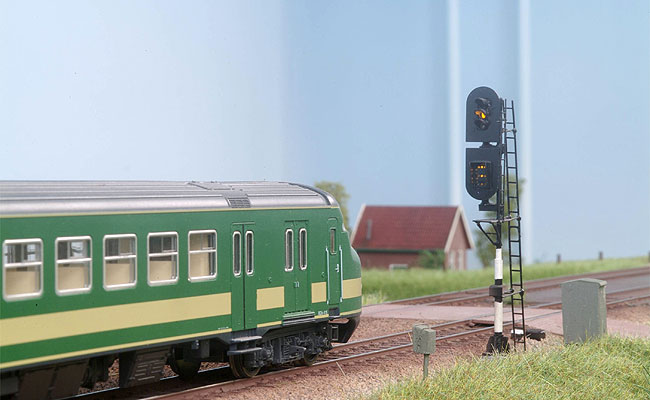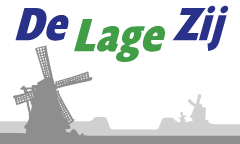Signaling

The Dutch signaling system is rather complex. How the signals are placed and which signals are placed where depends strongly on what is ahead on the track. Curves, inclines, points, they all determine to some extend the choice of signals. Signals do not only indicate if the track ahead is free, but also the maximum speed to the next signal and what the next signal might be showing. The result is quite a number of possible combinations of lights. That is why I invested a lot of time in researching an accurate signaling plan for De Lage Zij.

This diagram is a typical signaling plan as being used by the Dutch Railways (NS). The diagram shows the visible part of the main line and the station of Zwabberdam. The layout plan has been designed in such a way that the points leading to the main tracks are always in the 'straight' position, allowing for maximum speed. The speed in the station is limited to 60 km/h, because the station is situated in a (very wide) curve of the track. The maximum speed is indicated by signs along the track, showing a '6'. If a train has to pass a set of points in the 'curved' position, the maximum speed is 40 km/h. In that case, the signals show a flashing green light instead of a normal green light. The advanced signal will be showing yellow plus the number '4'.

The branch line to Magerveen is equipped with mechanical signals. And that is a very different story. The most common signal is the standard main signal. You can identify it by the round shape at the end of its arm. Standard signals are also used as exit signals in stations. Wherever a line branches out you will find branching signal. A branching signal is main signal that precedes a split in the track. They can be identified by the forked end of their arms. Of course there are also advanced signals you have to deal with.

2007
